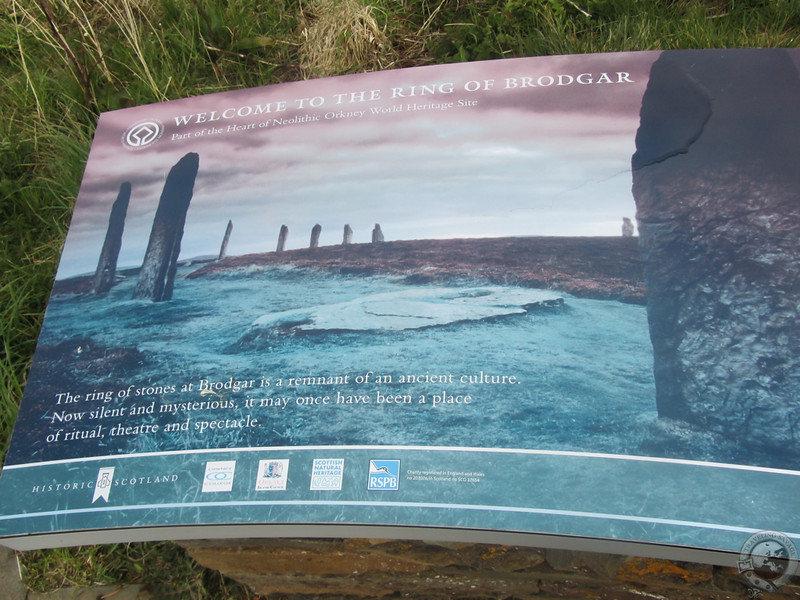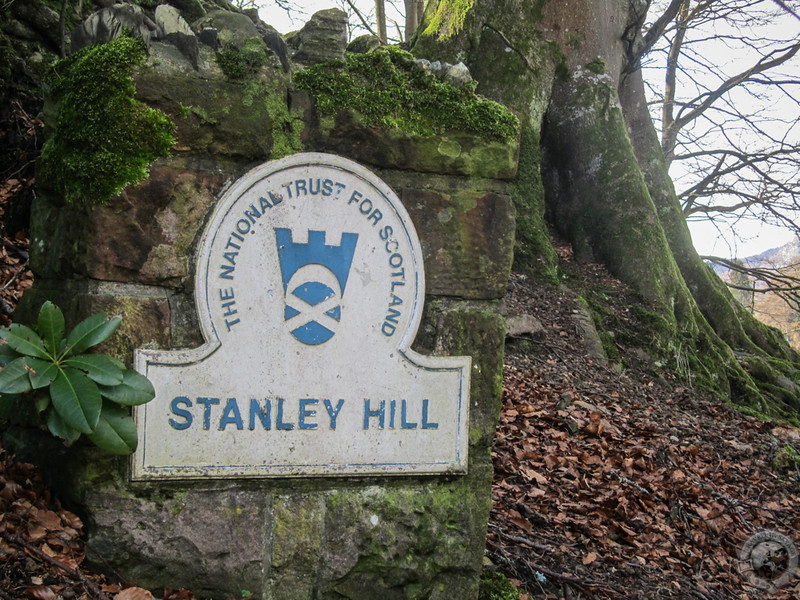It’s hard to imagine a trip to Scotland that doesn’t involve interacting with at least a handful of the country’s historic sites. The bulk of my trips to Scotland revolve around visiting the innumerable castles, ruins, and other sites of natural beauty and importance that litter the landscape, and the same holds true for so many of you seeking to take a deep draught of Scotland’s historical and cultural richness. If you’re in the midst of planning a trip to Scotland, or just mulling over one in your head, you’ve probably got a list of places you’d like to visit.
As you might expect, many of these visits are not free. The preservation and maintenance of Scotland’s historic sites requires funding, without which their permanence would surely dwindle until they were eventually lost to history. Nobody wants that.
Researching the sites on your hit list will yield two organizations coming up repeatedly in your searches: Historic Scotland and The National Trust for Scotland. These arbiters of Scottish history are the primary stewards of Scotland’s historic sites that ostensibly work together, and a careful look at their pricing and ticket options before your trip will save you money – potentially lots of money – down the stretch. I hope this article gets you thinking about your options when it comes to paying for entry fees at the many fascinating sites scattered around Scotland.
Let’s start by looking at the organizations you will be paying.
Historic Scotland
According to Historic Scotland’s Web site, they are “an Agency within the Scottish Government and is directly responsible to Scottish Ministers for safeguarding the nation’s historic environment, and promoting its understanding and enjoyment.” Historic Scotland has a huge number of sites under their care – somewhere around 360 – from the Scottish Borders to Shetland and all parts in between. Around a quarter of these sites are manned and charge admission fees, generally the most popular ones, though they usually have additional features like exhibitions, little museums, guidebooks, and visitor centers to further flesh out the history of the site.
The sites under Historic Scotland’s care are an impressive lot, including places like Edinburgh Castle, Skara Brae, Jarlshof, Iona Abbey, Stirling Castle, Arbroath Abbey, and loads more, with the majority in the Central Belt and Lowlands. The likelihood is high that Historic Scotland manages a place you’d like to visit.
Purchasing Tickets
There are four main ways to purchase your tickets to Historic Scotland’s sites.
- The most expensive way is to simply visit a site and purchase a single ticket. The main benefit of this method is the freedom and flexibility it provides if you’re unsure which historic sites you plan to visit. The downsides are that you’re paying peak admission price and you won’t get to skip any queues (which can be a real drag at places like Edinburgh Castle). Current ticket price examples (as of April 2014): Edinburgh Castle, £16; Stirling Castle, £14; Urquhart Castle, £7.90.
- Historic Scotland offers Explorer Passes for those who plan to visit many of their sites within a certain number of days. These passes come in two different flavors – 3 days in 5 consecutive days or 7 days in 14 consecutive days – that are priced by age/family tiers. Explorer Passes give you a window to use the pass within 5 or 14 days from the date you first use the pass. Within that span of time, you can use the pass on either 3 or 7 of those days and visit as many of Historic Scotland’s sites on those days without paying entry fees. For example, if I have a 3-day Explorer Pass and visit Edinburgh Castle on April 9, my pass will expire on April 13 (5 days later). I can use it on two more days within that time period. The Explorer Pass is a solid way to save money if you’re strategic about your trip planning. A 3-day (in 5 days) adult Explorer Pass currently costs £29. You can see the savings already – you’re saving money even if you just visit Edinburgh Castle and Stirling Castle.
- You can also purchase Regional Explorer Passes to certain parts of Scotland, places like Orkney, the Scottish Borders, and Dumfries & Galloway. These passes are perfect for visitors focusing on a specific region and offer greater savings.
- Finally, you can become a member of Historic Scotland, which lasts for a year and provides free entry to all of Historic Scotland’s sites, half-price entry to hundreds of places in England, Wales, and the Isle of Man, various discounts in shops and cafés, a quarterly magazine, and several other goodies. Their membership page does a good job of making the money-saving case for becoming a member, and it’s a fairly bullet-proof argument if you plan on seeing more than a handful of Historic Scotland’s sites, or even just a few if they happen to be the more expensive ones. Lifetime membership is also an option but mainly for those who live in Scotland or travel there frequently.
You can buy tickets, passes, and memberships online, but you can also do all of these things at the point of entry to whichever site you happen to visit first.
The National Trust for Scotland
The National Trust for Scotland describes itself as “the conservation charity that protects and promotes Scotland’s natural and cultural heritage for present and future generations to enjoy.” The trust was founded in 1931 and owns and manages around 130 properties, ranging from castles, gardens, historic sites, and remote rural areas. While in charge of a third the number of Historic Scotland’s properties, the National Trust for Scotland’s list is no less impressive with places like Drum Castle, the town of Dunkeld, Culloden, Mar Lodge Estate, and many others. I like the fact that the National Trust for Scotland is a conservation charity, and so do others: The NTS has often been the recipient of gifted properties.
Purchasing Tickets
The ticket structure of The National Trust for Scotland’s sites closely mirrors that of Historic Scotland.
- Again, the first option is to simply show up and pay. You will pay full price but if the visit was off-the-cuff or going to be your only stop at an NTS property, this is way to go. For a cost example, a visit to the Culloden battlefield will cost £11 and a visit to Brodie Castle £10.50 (as of April 2014).
- While information is a bit hard to find, you can also purchase an NTS Discover Ticket. Much like Historic Scotland’s Explorer Pass, the NTS Discover Ticket allows you to choose a window of time in which to use your ticket over a specified number of days. You can choose between three options for the Discover Ticket: 3 days in 7 consecutive days (£25), 7 days in 14 consecutive days (£30), or 14 days in 30 consecutive days (£35). The savings are clear when you plan to visit at least three NTS sites (which is surprisingly easy).
- The National Trust for Scotland also offers memberships that give you free access to all 100+ sites in Scotland and more than 300 National Trust properties in England, Wales, and Northern Ireland, not to mention hundreds of National Trust events throughout the year. A membership can be a cost-effective option you can treat like a more flexible Discover Ticket if you plan to visit many NTS sites over a longer period of time.
Recommendations
- Do your homework. Think about the places you’d like to visit on your trip to Scotland and jot down who manages each site, whether that’s Historic Scotland, the National Trust for Scotland, or an independent group (many sites remain under private ownership, a place like Dunvegan Castle, for example). Once you’ve got that list you can approach the goal of saving money on entry fees from a knowledgeable standpoint.
- Avoid paying full price for a ticket. Realistically, most people will want to purchase Explorer Passes or Discover Tickets. Often you’ll want both.
- Compare the places you’d like to visit to your itinerary. Will you need a small or big window for your pass?
- For those in the travel trade, consider the Scottish Heritage Pass.
Historic Scotland and the National Trust for Scotland do a good job of maintaining these ancient places. So get out and there and explore Scotland’s historic treasures. What you’ll find is endlessly fascinating, but it doesn’t need to break the bank.



Before our 3 week trip to Scotland I charted out the entrance fees for all the different historic sites we hoped to see. The bulk of the sites were Historic Scotland properties and I discovered it was almost half the price for my husband and I to get a year’s membership vs. paying a la carte entrance fees. What I didn’t know beforehand was how much I would come to love the Historic Scotland organization, for their dedicated preservation work, the care invested by the wonderful staff and docents at their properties. With membership cards we never waited in lines and also were given discounts in the Historic Scotland shops and cafes. I was also thrilled to discover the reciprocity with Historic England, provided us with 50% discount at both Stonehenge and Housesteads (Hadrian’s Wall). While I miss Scotland deeply, I’m thankful to at least get the membership quarterly magazine and feel like we’re supporting a great organization. So to anyone considering membership, I highly recommend it!
But do sign up for the membership at least a month prior to traveling if you’re in the US. It took several weeks for the cards and book to arrive. I loved having the site/ property location book in the car, since it often pointed out smaller sites we might have missed and could stop by and enjoy!
Hi Valerie,
What a great story! Historic Scotland and the National Trust for Scotland really do amazing jobs showcasing their properties. Kudos to you for putting in the legwork to make sure the pass would be worthwhile. I might add that you can also get the pass in country at the first property you visit, if you’re too close to your departure date to get it in the mail.
Hello Keith,
I just have to compliment you on all the fantastic information you reveal on your website and blog. I just found you a couple of days ago when researching electrical plugs. Now I’m fascinated by your stories and advice. We are headed to the Highland Games with a U.S. departure Aug. 29. I thank you for your dedication to us, travelers. I’m sure I will be referring back to your pages countless times as we meander through the country. Thanks again!
You’re welcome, Julie. Happy reading!